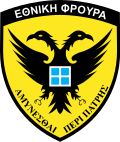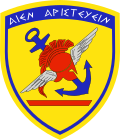| Member | CHOD | Member | CHOD | Member | CHOD |

Chief of the General Staff of
Austria | 
Major General
Rudolf Striedinger [ de ]
of the
 Austrian Land Forces Austrian Land Forces | 
Chief of Defence of
Belgium | 
General
Frederik Vansina
of the
 Belgian Air Component Belgian Air Component | 
Chief of Defence of
Bulgaria | 
Admiral
Emil Eftimov
of the
 Bulgarian Navy Bulgarian Navy |

Chief of the General Staff of
Croatia | 
Colonel General
Tihomir Kundid
of the
 Croatian Army Croatian Army | 
Chief of the General Staff of
Cyprus | 
Lieutenant General
Georgios Tsitsikostas
of the
 Cypriot Ground Forces Cypriot Ground Forces | 
Chief of the General Staff of the
Czech Republic | 
Army General
Karel Řehka
of the
 Czech Special Forces Czech Special Forces |

Chief of Defence of
Denmark | 
General
Michael Hyldgaard
of the
 Royal Danish Army Royal Danish Army | 
Commander of the Defence Forces of
Estonia | 
Lieutenant General
Andrus Merilo
of the
 Estonian Land Forces Estonian Land Forces | 
Chief of Defence of
Finland | 
General
Janne Jaakkola
of the
 Finnish Army Finnish Army |

Chief of the Defence Staff of
France | 
Général d'Armée Aérienne
Fabien Mandon
of the
 French Air and Space Force French Air and Space Force | 
Inspector General of the Bundeswehr of
Germany | 
General
Carsten Breuer
of the
 German Army German Army | 
Chief of the General Staff of
Greece | 
General
Dimitrios Choupis [ el ]
of the
 Hellenic Army Hellenic Army |

Chief of the General Staff of
Hungary | 
Colonel General
Gábor Böröndi
of the
 Hungarian Ground Forces Hungarian Ground Forces | 
Chief of Staff of the Defence Forces of
Ireland | 
Lieutenant General
Rossa Mulcahy
of the
 Irish Army Irish Army | 
Chief of the Defence Staff of
Italy | 
General
Luciano Portolano
of the
 Italian Army Italian Army |

Commander of the Joint Headquarters of
Latvia | 
Major General
Kaspars Pudāns
of the
 Latvian National Guard Latvian National Guard | 
Chief of Defence of
Lithuania | 
General
Raimundas Vaikšnoras
of the
 Lithuanian Land Force Lithuanian Land Force | 
Chief of Defence of
Luxembourg | 
General
Steve Thull
of the
 Luxembourg Army Luxembourg Army |

Commander of the Armed Forces of
Malta | 
Brigadier
Clinton J. O'Neill
of the
 Armed Forces of Malta Armed Forces of Malta | 
Chief of Defence of the
Netherlands | 
General
Onno Eichelsheim
of the
 Royal Netherlands Air and Space Force Royal Netherlands Air and Space Force | 
Chief of the General Staff of
Poland | 
General
Wiesław Kukuła
of the
 Polish Territorial Defence Forces Polish Territorial Defence Forces |

Chief of the General Staff of
Portugal | 
General
José Nunes da Fonseca [ pt ]
of the
 Portuguese Army Portuguese Army | 
Chief of the General Staff of
Romania | 
General
Gheorghiță Vlad
of the
 Romanian Land Forces Romanian Land Forces | 
Chief of the General Staff of
Slovakia | 
General
Daniel Zmeko
of the
 Slovak Ground Forces Slovak Ground Forces |

Chief of the General Staff of
Slovenia | 
Lieutenant Colonel General
Robert Glavaš
of the
 Slovenian Ground Force Slovenian Ground Force | 
Chief of the Defence Staff of
Spain | 
Admiral General
Teodoro Esteban López Calderón
of the
 Spanish Navy Spanish Navy | 
Chief of Defence of
Sweden | 
General
Michael Claesson
of the
 Swedish Army Swedish Army |
|



























































